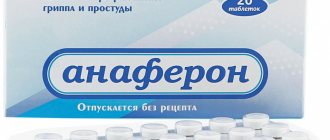Pharmacodynamics and pharmacokinetics
Pharmacodynamics
The antibiotic Macropen belongs to the group of macrolides . By inhibiting the synthesis of proteins in microbial cells, it has a bacteriostatic effect in small doses, and a bactericidal effect . Its effectiveness has been noted against gram-positive (clostridium, streptococcus, listeria, staphylococcus, corynobacteria), gram-negative (campylobacter, moraxella, Haemophilus influenzae, Helicobacter, bacteroides) bacteria , as well as intracellular microorganisms (mycoplasma, chlamydia, ureaplasma).
Pharmacokinetics
After administration, it is quickly and completely absorbed from the gastrointestinal tract. The maximum concentration of the drug in the serum is after 1–2 hours. At this level, the concentration remains for up to 6 hours. Eating slightly reduces the concentration of the drug in the blood, so it is recommended to take it before meals. The highest concentrations are created in the lungs, parotid gland and skin.
The drug is metabolized in the liver and excreted in the bile and kidneys (to a lesser extent).
Pharmacological properties of the drug Macropen
Macrolide antibiotic. Inhibits protein synthesis in microorganisms. Effective against intracellular pathogens (mycoplasma, legionella, chlamydia, Ureaplasma urealyticum ), gram-positive bacteria (streptococci, staphylococci, Corynebacterium diphtheriae, Listeria monocytogenes, Erysepelothrix, Clostridium spp .) and some gram-negative bacteria ( Neisseria spp., Moraxella catarrhalis, Bordetella pertussis , Helicobacter spp., Campylobacter spp., Haemophilus influenzae, Bacteroides spp .). After oral administration, it is quickly and completely absorbed, reaching maximum plasma concentrations 1–2 hours after administration. Higher concentrations of the antibiotic are created in inflamed tissues than in the blood serum; high concentrations of medicamycin are observed in bronchial secretions and skin. It is excreted in the form of metabolites, mainly in bile, and in small quantities in urine.
Indications for use
Infections caused by microorganisms sensitive to the drug:
- respiratory tract infections ( tonsillitis, pharyngitis, otitis media, sinusitis, bronchitis, pneumonia );
- urinary tract infections caused, among other things, by mycoplasma, ureaplasma, chlamydia;
- infections of mucous membranes and skin;
- enteritis caused by Campylobacter;
- diphtheria and whooping cough ;
- treatment of patients who cannot tolerate penicillin antibiotics.
Special instructions for the use of the drug Macropen
During long-term treatment, liver enzyme activity should be monitored, especially in patients with impaired liver function. Long-term use of the drug can lead to the development of superinfection. Persistent diarrhea may be a manifestation of pseudomembranous colitis. No negative effects on the fetus have been identified, however, the use of the drug during pregnancy is indicated only if the expected therapeutic effect for the expectant mother exceeds the potential risk to the fetus. Since the drug is excreted in breast milk, breastfeeding should be discontinued during treatment.
Instructions for use Macropen (Method and dosage)
Macropen has two forms of release - tablets and suspension , which is prepared from granules by adding water.
Macropen tablets, instructions for use
Macropen is prescribed every 8 hours.
Adults and children (body weight 30 kg or more) - 400 mg 3 times. For adults, the daily dose (maximum) is 1600 mg.
Children weighing less than 30 kg - 20–40 mg/kg, dividing the daily dose into 3 times. The daily dose for severe infections can be 50 mg/kg, also divided by 3 times.
Macropen suspension, instructions for use
This form of release is used in childhood. Depending on the child’s body weight, the dosage is calculated and taken 2 times a day:
- from 0 to 5 kg -3.75 ml of suspension 2 r/s;
- from 5 to 10 kg -7.5 ml of suspension 2 r/s;
- from 10 to 15 kg - 10 ml of suspension 2 r/s;
- from 15 to 20 kg - 15 ml of suspension 2 r/s;
- from 20 to 25 kg—22.5 ml of suspension 2 r/s.
To prepare the suspension, add 100 ml of water to the granules in the bottle. The course of treatment with Macropen is 7-10 days, and in the case of chlamydial infection, 14 days.
The answer to the question of what Macropen tablets are for is that this antibiotic is prescribed for any infections, but most often for respiratory tract infections . It is effective in 90% of patients with tonsillopharyngitis , acute otitis media and sinusitis , chronic bronchitis and pneumonia . Due to its low toxicity and high efficiency, Macropen is used in newborns in the treatment of chlamydial respiratory tract infection .
There is a high effectiveness of using this drug for angina . Since the antibiotic is broad-spectrum, the infection of the nasopharynx is quickly suppressed, and the symptoms of the disease are stopped. Macropen for angina is prescribed 400 mg 3 times a day.
Macropen is also widely used for sinusitis . And depending on the severity of this disease, the dose in adults can be 1200 mg - 1600 mg per day. With timely administration of Macropen for sinusitis, the likelihood of complications is reduced and in many cases, therapeutic puncture of the maxillary sinus can be avoided.
Instructions for use MACROPEN® (MACROPEN)
Midecamycin is a broad-spectrum antibiotic of the macrolide group, similar in activity to erythromycin.
Midecamycin is active against gram-positive bacteria -
Staphylococcus spp., Streptococcus spp., Pneumococcus spp., Bacillus anthracis, Corynebacterium diphtheriae, Listeria monocytogenes;
against some gram-negative bacteria
- Bordetella pertussis, Campylobacter spp., Moraxella catarrhalis, Neisseria spp.;
anaerobes
- Clostridium spp.
and Bacteroides spp.; intracellular pathogens
- Mycoplasma spp., Chlamydia spp., Legionella spp., Ureaplasma urealyticum.
In vitro bacterial susceptibility to midecamycin acetate (MDM-acetate) and midecamycin (MDM)
| Average MIC90 (µg/ml) | ||
| Bacterium | MDM acetate | MDM |
| Streptococcus pneumoniae | 0.5 | 0.10 |
| Streptococcus pyogenes | 0.67 | 0.20 |
| Streptococcus viridans | 0.28 | 0.39 |
| Staphylococcus aureus | 1.5 | 1.5 |
| Listeria monocytogenes | 2 | 1.5 |
| Bordetella pertussis | 0.25 | 0.20 |
| Legionella pneumophila | 0.1 | 0.12-1 |
| Moraxella catarrhalis | 2 | — |
| Helicobacter pylori | 0.5 | — |
| Propionibacterium acnes | 0.12 | — |
| Bacteroides fragilis | 5.5 | 3.13 |
| Mycoplasma pneumoniae | 0.024 | 0.0078 |
| Ureaplasma urealyticum | 0.34 | 1.56 |
| Mycoplasma hominis | 2.3 | — |
| Gardnerella vaginalis | 0.08 | — |
| Chlamydia trachomatis | 0.06 | — |
| Chlamydia pneumoniae | 0.5 | — |
The criteria for midecamycin regarding MIC interpretation are the same as for other macrolides according to NCCLS (National Clinical Laboratory Standards) standards. Bacteria are defined as sensitive if their MIC90 is ≤ 2 μg/ml, and as resistant if their MIC90 is ≥ 8 μg/ml.
Antibacterial effectiveness of metabolites
Metabolites of midecamycin have a similar antibacterial spectrum as midecamycin, but their effect is somewhat weaker. The results of some animal studies have demonstrated that the effectiveness of midecamycin and midecamycin acetate is better in vivo than in vitro. This is partly due to high concentrations of active metabolites in tissues.
Mechanism of action
Midecamycin inhibits RNA-dependent protein synthesis at the stage of protein chain elongation. Reversibly binds to the 50S subgroup and blocks the transpeptidation and/or translocation reaction. Due to the different structure of ribosomes, binding to the ribosomes of a eukaryotic cell does not occur. Therefore, the toxicity of macrolides to human cells is low.
Midecamycin, like other macrolide antibiotics, has a mainly bacteriostatic effect. It is also capable of exerting a bactericidal effect, which depends on the type of bacterium, the concentration of the active substance at the site of action, the size of the inoculum and the reproductive stage of the microorganism. In vitro activity is reduced in acidic conditions. If the pH value in the cultivation medium of Staphylococcus aureus or Streptococcus pyogenes increases from 7.2 to 8.0, then the MIC for midecamycin is 2 times lower; if the pH decreases, the MIC increases.
High intracellular concentrations of macrolides are achieved as a result of their good lipid solubility. This is especially important when treating infections caused by microorganisms with an intracellular development cycle, such as chlamydia, legionella and listeria. Midecamycin has been shown to accumulate in human alveolar macrophages. Macrolides also accumulate in neutrophils. While the ratio between extracellular and intracellular concentrations for erythromycin ranges from 1 to 10, for newer macrolides, including midecamycin, this value is greater than 10. The accumulation of neutrophils at the site of infection may further increase the concentration of macrolides in infected tissues.
In vitro studies have shown that midecamycin also affects immune functions. Thus, increased chemotaxis has been established in comparison with erythromycin. Midecamycin appears to stimulate natural killer cell activity in vivo. All of these studies indicate that midecamycin affects the immune system, which may be important for the in vivo antibiotic action of midecamycin.
Sustainability
Resistance to macrolides develops for the following reasons:
- decreased permeability of the outer cell membrane (Enterobacteria), inactivation of the drug (Staphylococcus aureus, Escherichia coli) and, most importantly, a change in the site of action.
From a geographic perspective, the prevalence of bacterial resistance to macrolides is highly variable. Resistance of methicillin-susceptible Staphylococcus aureus strains ranges from 1% to 50%, while most methicillin-resistant Staphylococcus aureus strains are also resistant to macrolides. Resistance of pneumococci is generally below 5%, but in some parts of the world it exceeds 50% (Japan). Resistance of Streptococcus pyogenes to macrolides ranges from 1% to 40% in Europe. Resistance very rarely develops in Mycoplasma spp., Chlamydia spp., Legionella spp. and Corynebacterium diphtheriae.
Macropen for children
In pediatric practice, this drug is considered the most effective and safest antibiotic. Pediatricians encounter virtually no side effects.
Macropen does not cause dysbiosis , which often occurs when other antibiotics are prescribed. Antifungal agents are not prescribed when using this drug (only in weakened infants). Macropen for children is available in a form convenient for administration - the prepared suspension has a pleasant taste, so there are no problems during treatment. This is also evidenced by reviews from parents who note the effect of treatment in cases where penicillin antibiotics are no longer effective.
Interaction
When using the drug with carbamazepine , its transformation in the liver decreases and, accordingly, the concentration in the serum increases, which increases the risk of the toxic effects of the latter: urinary retention, ataxia, convulsions .
When using Macropen with warfarin , the risk of bleeding increases, with cyclosporine - the risk of nephrotoxicity, with ergometrine and ergotamine - peripheral vascular spasm ( ischemia and possible gangrene of the extremities).
Macropen's analogs
Level 4 ATC code matches:
Ecositrin
Azicine
Rovamycin
AzitRus
Safocid
Clarithromycin
Sumamed Forte
Klarbakt
Azithromycin
Azitro Sandoz
Sumamed
ZI-Factor
Azitral
Azimed
Azicide
Spiramycin-vero
Zitrolide
Ecomed
Klacid SR
Klacid
There are no analogues for the active substance. Analogues of Macropen belonging to the same pharmacological group (second generation macrolides): Clarithromycin, Azithromycin, Josamycin.
The price of analogues Clarithromycin 500 mg No. 14 is 311 – 456 rubles. (manufactured by Pliva), designed for a 7-day course of treatment.
Azithromycin capsules 500 mg No. 3 - 85 -99 rub. (Obolenskoye FP Russia), designed for a 3-day course of treatment.
Reviews about Macropen
Reviews about Macropen are in most cases positive . Most of them are about the use of the drug for sinusitis. High efficiency is noted - in many cases, with timely administration of the drug, the patient's condition quickly improves, and puncture can be dispensed with. Duration of treatment is from 7 to 14 days. It is important to complete the course of treatment, otherwise the “hidden” infection may become chronic.
A large number of reviews about the use of the suspension for children. Parents are satisfied with the results of the treatment: it quickly and effectively helps with coughs, especially prolonged ones. Since the treatment lasted up to 10 days, the child was given probiotics ( Linex , Bactisubtil ) in parallel. Some noted the appearance of adverse reactions in children: nausea, lethargy, vomiting. In such cases, Macropen was canceled. In any case, there is no point in drawing conclusions that the drug is not effective. It depends on the individual characteristics of the organism.
Use of the drug Macropen
The suspension is intended for use in children. Dosing recommendations are given in the table below.
Body weight, kg (approximate age) | Suspension dosing |
| Up to 30 (10 years) | 22.5 ml (787.5 mg) 2 times a day |
| Under 20 (6 years) | 15 ml (525 mg) 2 times a day |
| Up to 15 (4 years) | 10 ml (350 mg) 2 times a day |
| Up to 10 (1–2 years) | 7.5 ml (262.2 mg) 2 times a day |
| Up to 5 (2 months) | 3.75 ml (131.25 mg) 2 times a day |
To prepare the suspension, add 100 ml of boiled water to the contents of the bottle and mix thoroughly. Adults and children aged 10 years and older (body weight from 30 kg) are prescribed a dose of 400 mg 3 times a day. The maximum daily dose for adults is 1600 mg, for children - 30-50 mg/kg, divided into 2 doses. For severe infections, the daily dose is divided into 3 doses. The course of treatment usually lasts 7–10 days, for chlamydial infection - 14 days.
Macropen price, where to buy
This drug can be found in any pharmacy. By purchasing Macropen tablets, the price of which in Moscow pharmacies varies and ranges from 268 to 376 rubles. for 16 capsules, you can make a request on the Internet and choose a more acceptable option. The price of Macropen suspension is from 270 rubles. up to 306 rub.
- Online pharmacies in RussiaRussia
- Online pharmacies in UkraineUkraine
- Online pharmacies in KazakhstanKazakhstan
ZdravCity
- Macropen tablets p.p.o.
400 mg 16 pcs. Merck KGaA and Co. Werk Spittal / KRKA SA, d.d. RUB 382 order - Macropen granules for Prig Susp. for internal approx. 175 mg/5 ml 115 ml JSC KRKA, d.d., Novo Mesto
500 rub. order
Pharmacy Dialogue
- Macropen (tab. 400 mg No. 16)KPKA
RUR 444 order
- Macropen (susp. 175 mg/5 ml 115 ml)KPKA
RUR 539 order
- Macropen (tab. 400 mg No. 16)KPKA
RUR 457 order
show more
Pharmacy24
- Macropen 175 mg/5 ml 115 ml granules
96 UAH. order - Macropen 400 mg No. 16 tablets KRKA, d.d., Novo Mesto, Slovenia/Merck KGaA i Co., Werk Spital, Austria
106 UAH order
PaniPharmacy
- Macropen tablets Macropen tablets. p/o 400 mg No. 16 Slovenia, KRKA dd Novo Mesto
116 UAH order
- Macropen liquid Macropen granules for suspension 175 mg/5 ml 115 ml Slovenia, KRKA dd Novo Mesto
120 UAH order
show more



